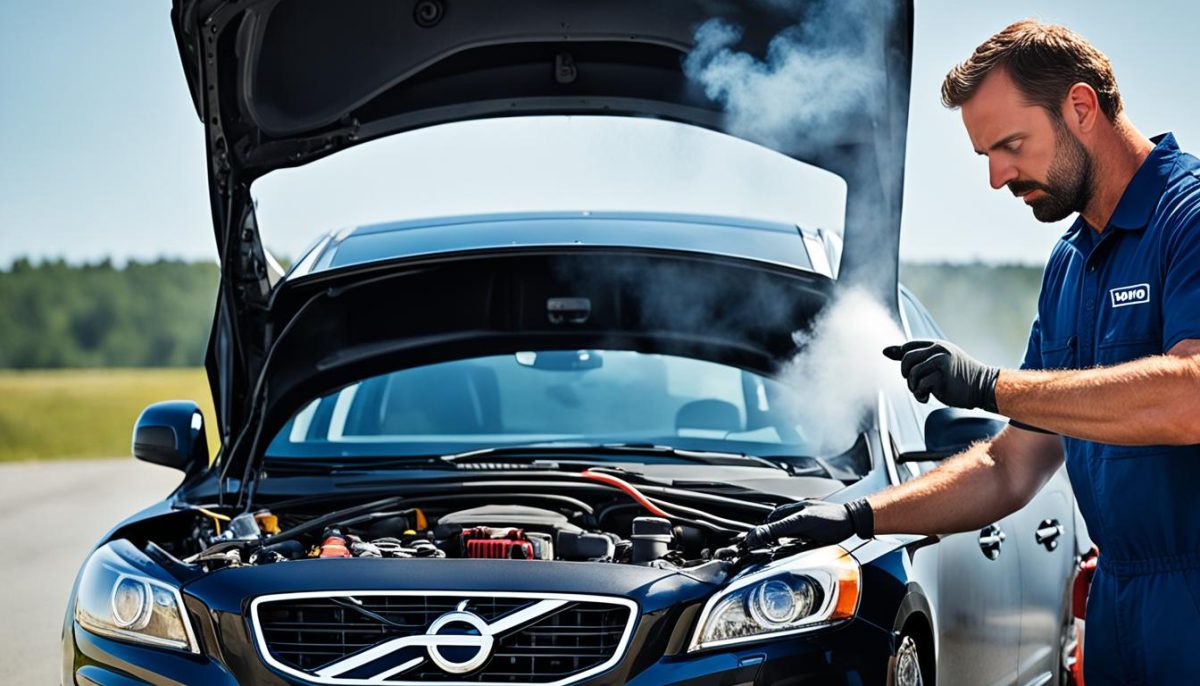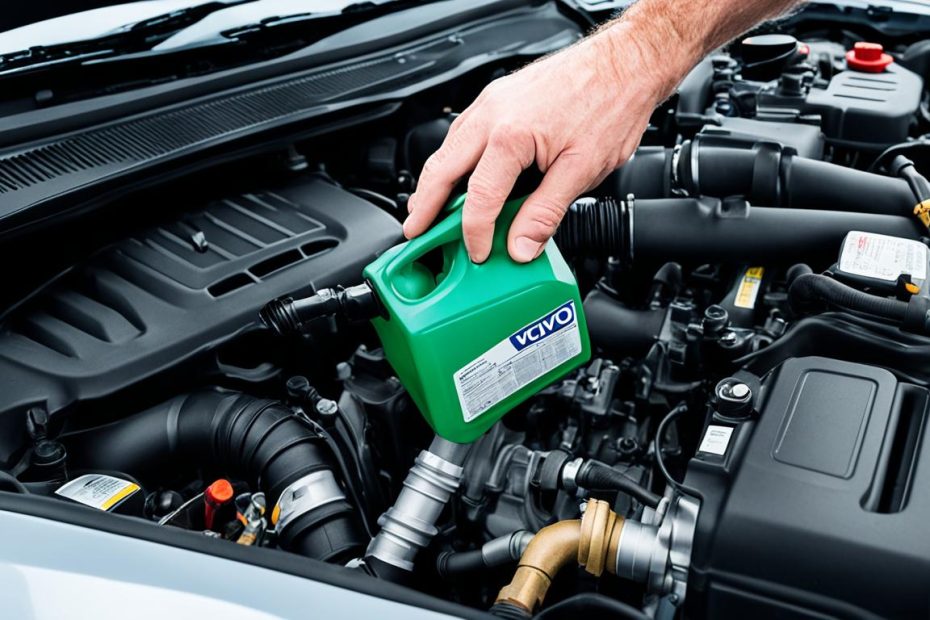Welcome to our guide on where to put coolant in your Volvo S60! Proper coolant maintenance is key to keeping your car running smoothly and avoiding overheating issues. Whether you’re a new Volvo owner or simply need a refresher, we’ve got you covered.
Before we dive in, let’s take a moment to understand why coolant is important and the role it plays in your Volvo S60’s engine performance. Coolant is not just any ordinary liquid; it serves multiple functions that contribute to the overall health of your vehicle.
When it comes to maintaining the optimum temperature of your engine, coolant is vital. It circulates through the engine, absorbing excess heat and preventing overheating. This helps to protect critical engine components from potential damage and prolongs the life of your Volvo S60.
Furthermore, coolant also acts as a corrosion inhibitor, protecting the inner surfaces of the engine and radiator from rust and corrosion. Over time, these elements can cause significant damage to your cooling system, resulting in costly repairs. Regularly checking and adding coolant as needed will help prevent these issues.
Finally, coolant plays a crucial role in lubricating the water pump, ensuring smooth operation and preventing unnecessary friction. By reducing wear and tear on the system, proper coolant levels contribute to better overall performance and fuel efficiency.
Now that you understand the importance of coolant in your Volvo S60, let’s move on to the practical side of things. In the next section, we’ll walk you through the step-by-step process of putting coolant in your vehicle, ensuring it stays in optimal condition. So, let’s get started!
Why Coolant is Important in Volvo S60
Understanding the importance of coolant in your Volvo S60 is vital for maintaining optimal engine performance. Coolant, also known as antifreeze, plays a crucial role in the cooling system of your vehicle. It serves multiple functions that contribute to the smooth operation and longevity of your Volvo’s engine.
One of the primary functions of coolant is to cool down the engine. As your Volvo S60 operates, the engine generates heat. Without proper cooling, the engine can overheat, leading to potential damage and costly repairs. Coolant absorbs the excess heat generated by the engine and carries it away to prevent overheating.
Additionally, coolant helps prevent corrosion within the engine. Over time, the components of your Volvo’s cooling system can be exposed to oxygen and various contaminants that can cause rust and corrosion. Coolant contains additives that inhibit corrosion, protecting the engine and cooling system from damage.
Furthermore, coolant acts as a lubricant for various components in the cooling system. It helps reduce friction and wear between moving parts, ensuring smooth operation and minimizing the risk of mechanical failures.
Quote: “Coolant is like the lifeblood of your Volvo S60’s engine. It keeps the temperature in check, prevents corrosion, and ensures the smooth functioning of crucial components.” – David Johnson, Automotive Expert
Benefits of Coolant in the Volvo S60:
- Prevents engine overheating
- Inhibits corrosion and rust
- Ensures smooth operation of engine components
- Protects the longevity of the cooling system
By understanding the importance of coolant in your Volvo S60 and regularly maintaining its coolant levels, you can ensure the longevity and reliable performance of your vehicle’s engine.

How to Put Coolant in Volvo S60
If you are in need of adding coolant to your Volvo S60, follow these step-by-step instructions to ensure proper coolant levels and prevent any cooling system issues.
Step 1: Locate the Coolant Reservoir
Begin by locating the coolant reservoir in your Volvo S60. The coolant reservoir is typically a translucent plastic tank with markings indicating the minimum and maximum levels of coolant. It is usually located near the engine and can be easily identified. Refer to your vehicle’s owner’s manual for specific instructions if needed.
Step 2: Check Coolant Levels
Once you have located the coolant reservoir, check the current coolant levels. Ensure that the coolant level is between the minimum and maximum markings on the reservoir. If the coolant level is below the minimum mark, you will need to add coolant to maintain optimal performance.
Step 3: Adding Coolant
Before adding coolant, make sure the engine is cool to avoid any accidents or burns. Once the engine is cool, remove the cap from the coolant reservoir. Slowly pour the coolant into the reservoir until the level reaches the maximum mark. Be cautious not to overfill the reservoir.
After adding coolant, replace the cap securely and ensure it is tightly closed to prevent any leaks. It is recommended to check the coolant level regularly and top it up as needed.
By following these simple steps, you can easily put coolant in your Volvo S60, ensuring proper coolant levels and keeping your vehicle’s cooling system in excellent condition.
Coolant Types for Volvo S60
When it comes to choosing the right coolant for your Volvo S60, it’s important to consider the different types available and their compatibility with your vehicle. The type of coolant you use can have a significant impact on the overall performance and longevity of your engine.
There are two main types of coolant commonly used in Volvo S60 vehicles: ethylene glycol-based coolant and hybrid organic acid technology (HOAT) coolant. Ethylene glycol-based coolant is the most common type and provides excellent heat transfer and freeze protection. On the other hand, HOAT coolant is formulated with a combination of organic acids and silicates, providing enhanced corrosion protection for certain engine components.
While both coolant types can offer adequate protection for your Volvo S60, it’s essential to consult your vehicle’s owner’s manual or contact a Volvo dealership to determine the recommended coolant for your specific model and year. This will ensure that you select the coolant that meets Volvo’s specifications and requirements, and that you maintain the optimal performance of your car’s cooling system.
Remember, using the right coolant type and regularly checking coolant levels are essential for the longevity and reliability of your Volvo S60. By following the manufacturer’s recommendations and choosing the appropriate coolant, you can ensure that your car’s engine stays cool and functions at its best.
